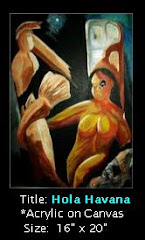Command Performance radio broadcast c. 1944 with Jane Russell, Bob Hope and, in background, Major Meredith Willson conducting the AFRS band.
My father, who turned 86 a couple of weeks ago, left high school and enlisted in the Navy just weeks after the attack on Pearl Harbor.
He was 17.
While he and millions of other young men and women were off to war, entertainers did what they could to maintain their morale and bring them a slice of home.
Hollywood and Broadway literally went to war as well.
Volunteer USO entertainers visited military bases, hospitals, and in some cases, traveled perilously close to the front lines. Other entertainers made morale boosting movies, or entertained the troops via AFRS (Armed Forces Radio Service).
Some did all of those things, and more.
While Bob Hope is almost universally best remembered for his `camp shows’, the list of entertainers who volunteered to go overseas is staggering, and includes the famous and the not-so-famous.
And during those war years, 28 USO performers died as a result of their tour, either from plane accidents, illness, or disease. Many others were injured.
Al Jolson quite famously contracted Malaria while on tour, which cost him a lung, and shortened his career. Broadway singer Jane Froman was severely injured in a plane accident. She married the co-pilot who saved her life in that crash, and her story was later told in the 1952 film With a Song in My Heart.
Despite the risks, and the loss of income, thousands entertainers clamored for opportunities to volunteer. You’d even find big-name stars serving coffee and donuts at the Hollywood Canteen.
Each week, starting shortly after the attack on Pearl Harbor, and continuing until 1949 (`Each week and every week . . . until it’s over . . . over there’) Command Performance brought the best of Hollywood and the world of entertainment to service personnel around the world.
Entertainers read letters from, and responded to, requests from the troops.
Christmas shows beamed on the AFRS to the men and women overseas during WWII are particularly poignant. During the early days (1942-44) the Allies were reeling, and victory was far from assured.
Today, I bring you 8 very special extended Christmas shows from Command Performance which are available on the Internet Archive .
These shows run from 1 hour to 2 hours each.
CP1-421224ChristmasShow 27.5 MB
CP1-431225ChristmasSpecial 41.9 MB
CP1-441224ChristmasShow 59.6 MB
CP1-441225ChristmasShow 27.6 MB
CP1-451225ChristmasProgram 56.3 MB
CP1-461225ChristmasSpecial_1946 26.6 MB
CP1-481225ChristmasSpecial_1 53.5 MB
CP1-481225ChristmasSpecial_2 55.7 MB
You can download all of these files in ZIP format (or if you prefer, in OGG or VBR MP3 format) at this link.











